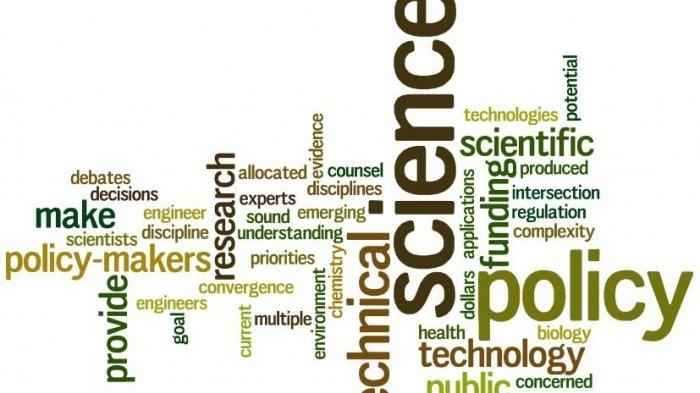Is Work Life Balance Matter in Accounting Profession?
Keywords:
Work Life Balance, Work Involvement, Work Engagement, Work SatisfactionAbstract
This study investigates the impact of work involvement, work engagement, and work satisfaction on work-life balance within the accounting profession. Additionally, it proposes strategies to support employees in achieving a healthy balance and identifies key factors contributing to workplace changes that influence work-life balance. The relationships between the independent and dependent variables were analyzed using SPSS, based on a sample of 54 accounting professionals with diverse work experiences. The findings reveal that work involvement and work engagement have a positive effect on work-life balance, whereas work satisfaction does not exhibit a significant impact. Hypothesis testing results confirm that only the first two hypotheses were supported, while the third was rejected. The novelty of this study lies in its focus on work-life balance within the accounting profession, a field characterized by high workloads and stringent accuracy demands.
Downloads
References
Aryee, S., Srinivas, E. S., & Tan, H. H. (2005). Rhythms of Life: Antecedents and Outcomes of Work-Family Balance in Employed Parents. Journal of Applied Psychology, 90(1), 132, https://doi.org/10.1037/0021-9010.90.1.132
Buchheit, S., Dalton, D. W., Harp, N. L., & Hollingsworth, C. W. (2016). A Contemporary Analysis of Accounting Professionals’ Work-Life Balance. Accounting Horizons, 30(1), 41–62, http://dx.doi.org/10.2308/acch-51262
De Kort, M., & Poell, R. F. (2016). The Relationship between Work-Life Balance, Work Engagement and Participation in Employee Development Activities: A Moderated Mediation Model. Tilburg University, 1(1), 1–87, http://arno.uvt.nl/show.cgi?fid=142185
Eldor, L., Harpaz, I., & Westman, M. (2020). The Work/Nonwork Spillover: The Enrichment Role of Work Engagement. Journal of Leadership & Organizational Studies, 27(1), 21–34, http://dx.doi.org/10.1177/1548051816647362
Guest, D. E. (2002). Perspectives on the Study of Work-Life Balance. Social Science Information, 41(2), 255–279, https://doi.org/10.1177/0539018402041002005
Halbesleben, J. R. B. (2010). A Meta-Analysis of Work Engagement: Relationships with Burnout, Demands, Resources, and Consequences. Work Engagement: A Handbook of Essential Theory and Research, 8(1), 102–117, https://psycnet.apa.org/record/2010-06187-008
Ilies, R., Liu, X.-Y., Liu, Y., & Zheng, X. (2017). Why do Employees have Better Family Lives when they are Highly Engaged at Work? Journal of Applied Psychology, 102(6), 956, https://doi.org/10.1037/apl0000211
Johari, J., & Yahya, K. K. (2016). Job Characteristics, Work Involvement, and Job Performance of Public Servants. European Journal of Training and Development, 40(7), 554–575, http://dx.doi.org/10.1108/EJTD-07-2015-0051
Jones, K., & Taylor, B. (2017). Work Life Balance in the Accounting Industry. The Applied Management Review, 1(1), 63–81, https://researcharchive.wintec.ac.nz/id/eprint/5737/
Kasbuntoro, D. I., Maemunah, S., Mahfud, I., Fahlevi, M., & Parashakti, R. D. (2020). Work-Life Balance and Job Satisfaction: A Case Study of Employees on Banking Companies in Jakarta. International Journal of Control and Automation, 13(4), 439–451, http://sersc.org/journals/index.php/IJCA/article/view/16461
Kristiana, I. F., & Purwono, U. (2019). Analisis Rasch dalam Utrecht Work Engagement Scale-9 (UWES 9) Versi Bahasa Indonesia. Jurnal Psikologi Universitas Diponegoro, 17(2), 204–217, https://ejournal.undip.ac.id/index.php/psikologi/article/view/20145
Marais, E., De Klerk, M., Nel, J. A., & De Beer, L. (2014). The Antecedents and Outcomes of Work-Family Enrichment amongst Female Workers. SA Journal of Industrial Psychology, 40(1), 1–14, https://sajip.co.za/index.php/sajip/article/view/1186
Palumbo, R. (2020). Improving Health Professionals’ Involvement whilst Sustaining Work–Life Balance: Evidence from an Empirical Analysis. Sustainability, 12(21), 9291, https://doi.org/10.3390/su12219291
Palumbo, R. (2022). Involved at Work and Disinvolved Out of Work: unraveling the Implications of Involvement on Accountants’ Work–Life Balance. Management Decision, 61(13), 26–53, https://psycnet.apa.org/doi/10.1108/MD-03-2022-0345
Peters, P., & Blomme, R. J. (2019). Forget about ‘the Ideal Worker’: A Theoretical Contribution to the Debate on Flexible Workplace Designs, Work/Life Conflict, and Opportunities for Gender Equality. Business Horizons, 62(5), 603–613, https://doi.org/10.1016/j.bushor.2019.04.003
Qing, G., & Zhou, E. (2017). Bidirectional Work–Family Enrichment Mediates the Relationship between Family-Supportive Supervisor Behaviors and Work Engagement. Social Behavior and Personality: An International Journal, 45(2), 299–308, https://psycnet.apa.org/doi/10.2224/sbp.6023
Rampton, J. (2016). How Work Life Balance can keep your Employees Happy and your Business Healthy. Inc. https://www. inc. com/john-rampton/how-work-life-balance-can-keep ….
Robinson, J. (2011). The Taboo Toxin Of Overwork. Huffpost.Com. https://www.huffpost.com/entry/americans-overworked_b_894324
Rotenberry, P. F., & Moberg, P. J. (2007). Assessing the Impact of Job Involvement on Performance. Management Research News. https://doi.org/10.1108/01409170710733278
Shevchuk, A., Strebkov, D., & Davis, S. N. (2019). Skill Mismatch and Work–Life Conflict: The Mediating Role of Job Satisfaction. Journal of Education and Work, 32(2), 181–195, http://dx.doi.org/10.1080/13639080.2019.1616281
Shih, H.-A., & Wijaya, N. H. S. (2017). Team-Member Exchange, Voice Behavior, and Creative Work Involvement. International Journal of Manpower, 38(3), 417–431, https://doi.org/10.1108/IJM-09-2015-0139
Sirgy, M. J., & Lee, D.-J. (2018). Work-Life Balance: An Integrative Review. Applied Research in Quality of Life, 13, 229–254, http://dx.doi.org/10.1007/s11482-017-9509-8
Smith, K. T., Smith, L. M., & Brower, T. R. (2011). An Examination of Work-Life Balance Perspectives of Accountants. International Journal of Critical Accounting, 3(4), 367–383, http://dx.doi.org/10.1504/IJCA.2011.042929
Thakur, A., & Kumar, N. (2015). The Effect of Perceived Organizational Support, Role Related Aspects and Work Involvement on Work-Life Balance: Self Efficacy as a Moderator. International Journal of Scientific and Research Publications, 5(1), 1–8, https://www.ijsrp.org/research-paper-0115.php?rp=P373580
Timms, C., Brough, P., O’Driscoll, M., Kalliath, T., Siu, O., Sit, C., & Lo, D. (2015). Positive Pathways to Engaging Workers: Work–Family Enrichment as a Predictor of Work Engagement. Asia Pacific Journal of Human Resources, 53(4), 490–510.
Wardani, L. M. I., & Firmansyah, R. (2019). The work-life balance of blue-collar workers: The role of employee engagement and burnout. Jurnal Psikologi Ulayat, 6(2), 227–241.
Wood, J., Oh, J., Park, J., & Kim, W. (2020). The Relationship Between Work Engagement and Work–Life Balance in Organizations: A Review of the Empirical Research. Human Resource Development Review. https://doi.org/10.1177/1534484320917560

Downloads
Published
How to Cite
Issue
Section
License
Copyright (c) 2025 author(s)

This work is licensed under a Creative Commons Attribution-ShareAlike 4.0 International License.
Authors whose manuscripts are published in the Journal of Public Policy must agree to the following terms;
- Publication rights for all manuscript materials published are held by the editorial board with the author's consent.
- The legal formalities for digital access to the Journal of Public Policy are subject to the Creative Commons Attribution Sharealike (CC BY SA) license, which means the Journal of Public Policy has the right to store, redistribute, reformat, manage in a database, maintain, and publish the manuscript without seeking permission from the author as long as the author's name is included as the copyright owner.
- Published manuscripts are open access for the purpose of disseminating research results. Besides this purpose, the editorial board is not responsible for copyright law violations.


.png)



